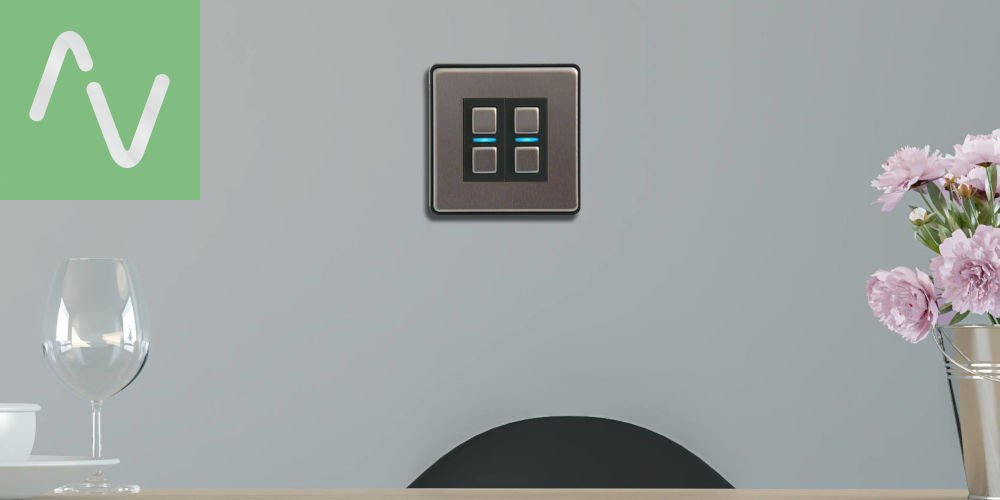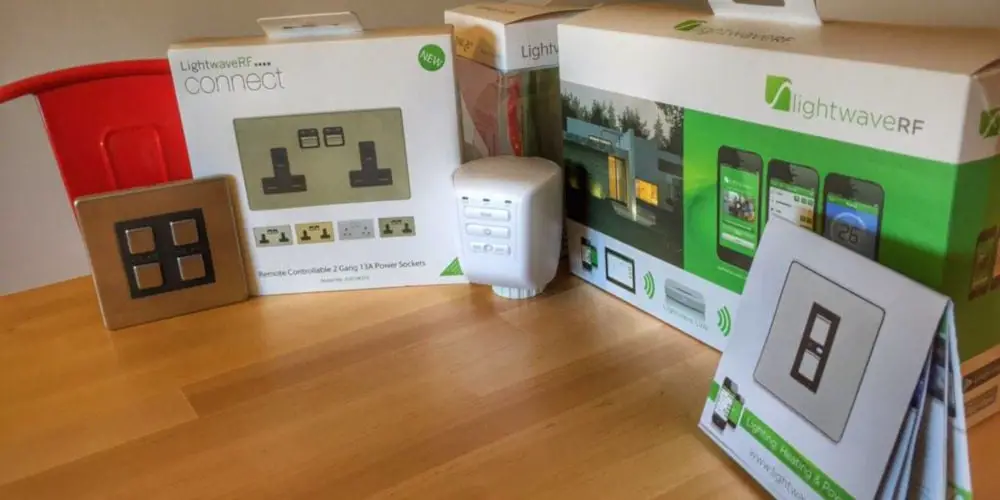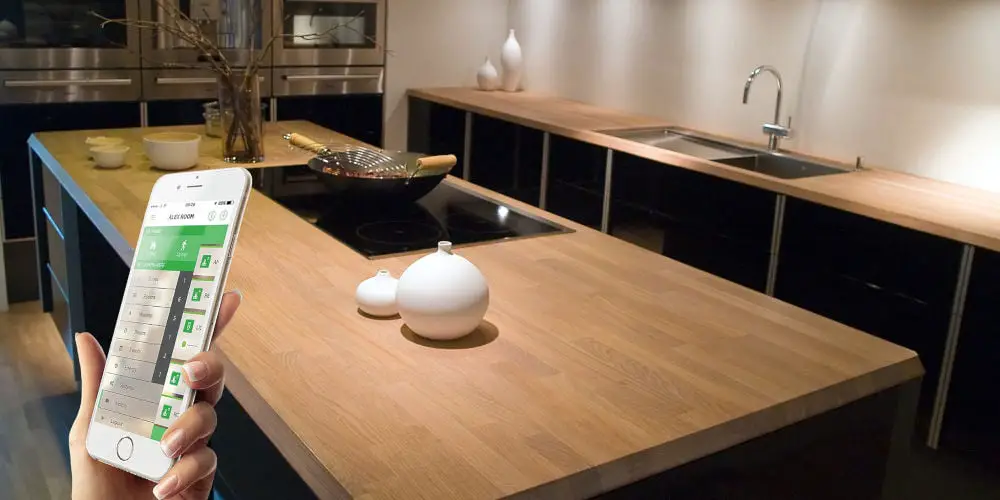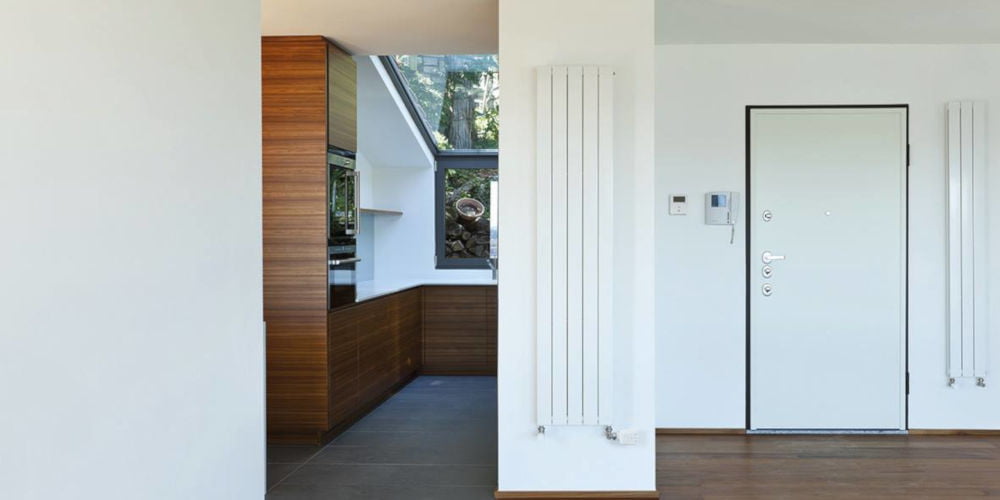How to build your Lightwave smart home

If you’re looking to automate your property with a solid yet affordable system, you’ll want to consider adding a Lightwave smart home system.
In the past decade, home technology has moved at lightning fast speed. It seems like just yesterday that we were upgrading our iPod for Spotify!
However, with the rise of the internet, we’ve ushered in a new age of technological enlightenment. And so, it’s no surprise that new technology has reshaped how we live.
And while many of these new ideas and inventions, disappeared due to their complexity or an inability to find a problem it actually solved! What remains is highly useable tech which enhances modern life.
One such brand is Lightwave, and as a UK publication, we’re slightly biased to favour British brands! We’ll explore the brand, their products and try to make some predictions of what they’ll do next.
What is a Lightwave smart home?
Before jumping into the products and how they work. It’s worth talking about the company’s history and the innovations which came before Lightwave.
The beginning
The story starts with John Sinclair and John Shermer. Both worked for decades helping disabled people live better through the application of the latest technology.
Their company, JSJS Designs, as it was called in 2008, transitioned from helping disabled people to devising systems for the consumer market.
The Lightwave brand grew out of several partnerships, where JSJS Designs handled the product design with a third party distributing the products under their own brand.
You might have seen their HomeEasy range in B&Q or what became early LightwaveRF designs released under the Siemens name.
Launching their own brand
Having done several licensing deals, the two John decided to go it alone and rebranded as LightwaveRF. They also decided to float the company on the AIM share market.
By 2019, they rebranded simply as Lightwave.
Without getting too technical
So that’s a brief history. However, we still haven’t answered the question: what does a Lightwave smart home system actually do? Without getting too technical, Lightwave uses wireless technology to allow the user more control over their household devices.
Since releasing its first products in 2011, the brand has enabled homeowners to create their dream smart home without the cost usually associated with the technology.
While it might be preferable for all of us to install a top of the range wired system such as Crestron or Control4, it’s unlikely to add any substantial value to the property’s market value.
However, a simplified and cheaper system which does the lion’s share of a high-end system will always be a welcome addition to the marketplace. Not only by consumers and DIY enthusiasts but also by potential home buyers looking for these features.
Changing the game
In our minds, Lightwave changed the game in many ways. Firstly, as a British company, they are designed for the UK market rather than simply releasing a version of a US-designed product.
While some might argue this puts them at a global disadvantage, it does make them unique.
Secondly, by simplifying the features, they’ve created a superb line of affordable products and inspired many homeowners to dream about how tech can change their daily lives.

photo by Lightwave plc
Exploring the basics
The simplest way to experience a Lightwave smart home system is to start with a set of plug-in and play sockets. In this pack are three sockets and a remote control.
As the name suggests, you can plug these Lightwave sockets into the mains and plug your device into the Lightwave unit. Using the remote control, you can turn sockets on and off. While this isn’t the highest-tech solution, it’s a solid introduction to home automation.
Imagine having two lamps in your living room, but the switches are behind a sofa or furniture. You’ll struggle to turn them on or off. However, using plug-in-and-play devices, you can now control these lights with a remote.
The days of moving the sofa or trying to bend over to find the switch are over!

photo by Lightwave plc
Automating the whole house
Now we’ve covered the simplest system available, let’s look at building a more complete home automation system.
The real fun begins when we start to build a system around the Lightwave Link Plus LP2 Hub. This small device is the system’s brain and can communicate with up to 200 Lightwave smart home devices, such as the plug-in-and-play sockets in our previous example.
The biggest downside to the plug-in-and-play devices is the remote, as it only allows us to switch single devices. But we can exchange it for a Link Plus Hub! This single change enables us to control the three sockets using an app on a phone, tablet or computer.
The Hub communicates with all the devices you have linked to it. At the same time, it also connects to the internet through your Wi-Fi router. Most people choose to place the Hub next to their internet router, making it easy to reset.
While the first apps were very basic and quite buggy, over the last few years Lightwave has invested a lot into designing and releasing apps that work well and look clean and modern. Use the app (iOS and Android) and the online portal.
With our three sockets, we can use the app to control a single device or all three. By having more control, we can manipulate our lighting in several ways. Also, we’re less likely to lose our phone or tablet compared to the remote!
Using the Lightwave app, we can turn a single device on and off. However, the online portal enables us to create a scene which turns on two sockets and turns the third off.
By now, we’re starting to really get the hang of it!
Power sockets
Let’s next upgrade the plug-in-and-play sockets for DIY-friendly retrofit sockets. These contain all the tech we need in a much better-looking package. While looking quite like your average UK power socket, they are deeper.
So you might need to spend some time doing some preparations before you can wire them into. Once installed and paired, we can use the app to control single devices or set up scenes to control multiple devices.
You can purchase single and double Lightwave power sockets.
Light fittings
Like power sockets, the Lightwave smart home range also includes light switches. Again, they are DIY-friendly retrofit sockets. What makes them different is they have in-build dimmers. Hence, the two buttons allow you to dim the light up or down.
You can easily swap your current light switches with the Lightwave version and pair them with the Link Plus Hub.
Some bulbs have no issues being dimmed, while others will flicker when run at a lower voltage (due to a lack of resistance – usually fixed by adding a resistor).
Lightwave have tried to solve this issue by releasing their own bulbs. However, as a very limited range, it’s unlikely to satisfy all of your requirements. Therefore, it may take you a bit of trial and error to get all your lights to play nice and fully integrate.
You can purchase single-gang, double-gang, triple-gang and quadrupole-gang dimmers.
Getting close to the dream?
Controlling both lighting and power at the same time could be the system you’ve dreamed of, or maybe we’re close! The app allows us to assign devices to our preset rooms and control each element in several ways. So, we’re fully in control.
Heating
Let’s discuss how Lightwave can help with heating. While some of the first heating devices had problems, it seems that Lightwave has solved these issues. You can buy TRV smart radiator valves and a smart home thermostat. These devices allow for DIY installation.
You don’t need to heat empty rooms. Plus, you can programme the system to heat your home to the ideal temperature ready for your return after work or a day out.
Lightwave sells TRV valves, a Boiler Switch, a Thermostat and an energy monitor. You also can use Hive Active Heating with Lightwave and control them using IFTTT.
Additional control
Using a relay module, you can seamlessly integrate blinds or curtains into the system. If you want to automate lights, you can use a movement sensor as the trigger. Imagine the light turning on when you visit the loo at 2 am or turn off the heating when you open a window.
What we love the most about the Lightwave smart home system is its modular. It can easily change and adapt to our needs. And that it doesn’t require specialist skills to install, programme or update.
Real-life uses
Let’s explore a few real-life examples of how Lightwave smart home can change your life.
Firstly, imagine you always came home at 5:30 pm. The first thing you do is switch on the hall light and turn up the thermostat. With a Lightwave automation system, you arrive home to find the house is at the right temperature and the light is already on.
Another example. Say you travel a lot, your home is quite often left empty. You can set the system to mimic your movements so it looks like you’re still there. Plus, you can monitor what happens and your spending from anywhere using the app.
One last example. Imagine having a snug or cinema room in your house. Using a Lightwave smart home system combined with a TV or projector and a Hi-Fi system, we can programme a scene to close the blinds and dim the lights.
Just think how adding a few bits of tech to a room could transform how you enjoyed watching a Movie?!
Can Lightwave be used with…
Apple HomeKit?
In short yes. The company is one of only a handful of UK brands who’s an approved Apple partner. Start with our guide: Does Lightwave work with Apple HomeKit.
Amazon Alexa?
Start with our guide to Lightwave and Alexa, or watch one of the many great YouTube videos of people who have successfully integrated the two systems together.
Other home automation?
As the system can work with IFTTT, your Lightwave smart home can integrate with other home automation systems and devices. If you don’t have a clue about IFTTT, start with our guide to Lightwave and IFTTT.
However, as the system is considered entry-level and only UK focused (unlike most, which are USA focused) by the big brands, don’t expect them to offer compatible devices anytime soon.
You might like to read our comparison of Lightwave vs Samsung SmartThings to learn about the differences between the two smart home systems. Another worthwhile read is our comparison of Lightwave vs Zigbee.
Where is the best starting point?
It depends on a few factors. If you’re completely new to home automation, start with a Lightwave starter kit. Get comfortable using that, and expand your system as it makes sense. You could even lower the cost by buying devices on eBay.
If you’re more adventurous, our best advice is to start with a starter pack and build your system from a single room.
However, you could consider buying a hub and automating one feature in a room. As you’re comfortable, slowly expand that feature across your whole property.
Next, add a new function to that first room and expand that out into the whole house. And keep going until you’ve automated every device you can.
It’s worth researching and thinking about how you will use the system. While installing a high-end system can easily cost £100,000, if you were to add a complete Lightwave smart home system to your property you could be looking at at least £5,000.
While still quite a bit of money, you can reduce the cost of your Lightwave system by preparing before buying. Otherwise, you might have a very expensive mess on your hands!

photo by Lightwave plc
Are the products reliable?
Overall yes. However, it hasn’t always been that way, and some users may experience the odd issue. For example, the first app was truly horrendous! But Lightwave has upped their game in this area.
Another product which had issues was the TRV heating valves, which made a loud clicking noise. However, Lightwave acted quickly. Many consumers mailed their TRVs back to the HQ to be fixed.
As generation 2 gets rolled out, it seems from online forums that people are experiencing issues getting the 1st generation to work with the 2nd as the technology has changed from single-way communications to two-way communications.
While this is fine if you’re just starting, it’s not great if you plan to start small buying from eBay and then scale up.
It’s also not ideal if you’re looking to expand your current, 1st generation system.
So our advice would be to stick to either a first-generation system and use websites like eBay to uncover all the devices you need. Or start building a generation 2 system from scratch, it’ll be safer, stronger and enable you to protect your smart home from hackers.
How good is the customer support?
It seems that Lightwave has gotten better at support over the years. They have become more active on Facebook and are willing to answer comments.
From the start, they have offered technical support using a ticketing system, and continue to do so. They also offer phone support, which could be the quickest way to get an answer. So we would rate their support as good.

photo by Lightwave plc
Is it worth signing up for Lightwave Plus?
A new service recently launched in September 2021 is Lightwave Plus. Available for £8 per month or £80 annually, the service offers a range of benefits, including extended warranties, priority support and cloud backups.
Being a new service, we’d wait until they’ve ironed out the kinks and refined the offering a little more. Having reviewed Lightwave Plus, we’re still studying this service in depth and listening to user feedback to assess if it offers value for money.
If you’re building a complete home automation system from the ground up, it’s worth buying direct and asking them to throw in a year of Lightwave Plus as part of the package.
What is next for Lightwave?
While it’s impossible to say what they’ve got their hand busy with, the introduction of the second generation will keep them busy for a while.
It would be great to see them add more security products, such as video cameras and doorbells. That said, many will continue to add a Lightwave smart home system to their property.
There are several Lightwave alternatives that might be a better solution for you, so it’s worth considering all of your options.





